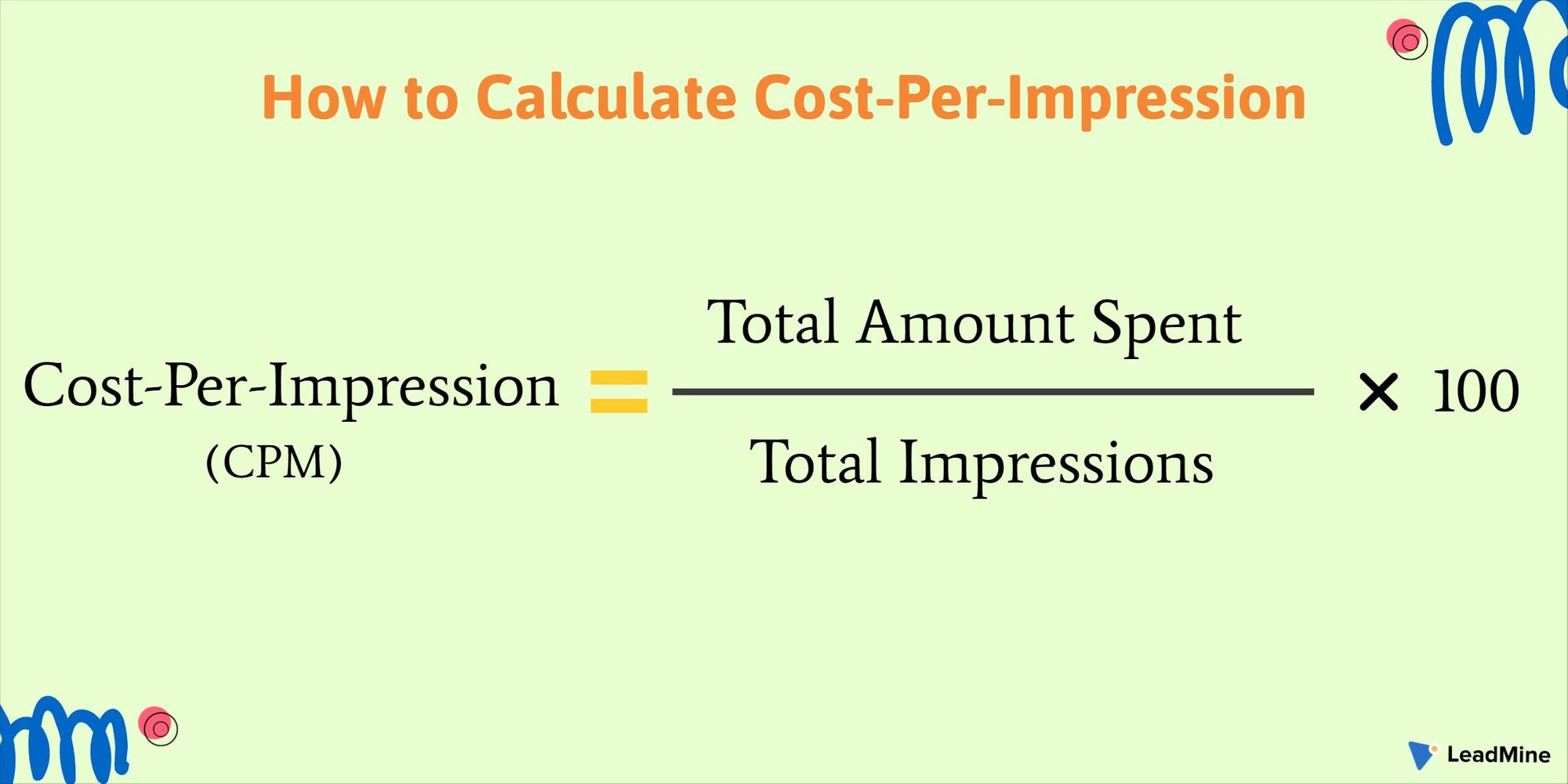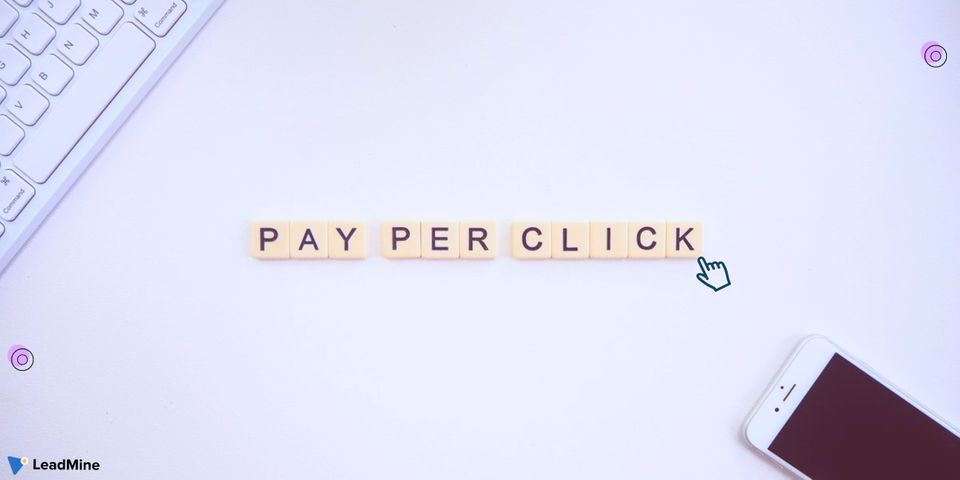Here we will cover the following:
- What is Cost Per Impression?
- Purpose of CPM
- How to Calculate Cost Per Impression?
- Cost Per Impression Example
- Impression vs Pageview
- Why Cost Per Impression is Important?
- When to Use CPM
- Summary
What is Cost Per Impression? 💡
Cost per impression (CPM - the letter "M" is the Roman numeral for 1,000), also known as cost per thousand is a marketing term used in traditional advertising media, online advertising, and web traffic. It refers to the cost of advertising on the internet or email advertising, where advertisers should pay for each advertisement displayed for them.
CPM is an important metric to understand online marketing because it helps advertisers to know their digital marketing budget exactly and determine how effective their advertisement is. It is always measured alongside cost-per-click and return on investment.
CPI is the cost or expense for every thousand potential customers when the advertisements been watched by audiences. It is also known as cost per mille, with mille being Latin for thousand.
If you are thinking why cost per impression isn’t more commonly abbreviated as CPI, it is because CPM technically stands for cost per mille, as I said before mille is the Latin term for one thousand. It also referred to cost-per-thousand (CPT). So CPI, CPM, and CPT are generally mean the same thing when it comes to online marketing.
Purpose of CPM 🤓
Along with pay-per-click (PPC) and cost-per-order, cost-per-impression is used to assess the cost-effectiveness and profitability of online advertising. Cost per impression is the major advertising strategy to those used in other media such as television, radio, which sell advertising based on views, listenership, and readership.
CPM provides a comparable measure to contrast online advertising with other media.
How to Calculate Cost Per Impression 🤔
To calculate how much you are paying for the CPM campaign for each impression, it is pretty clear.

Simply, divide your total amount spent on your CPM campaign by the total amount of impressions to get your cost per impression.
For example, consider you spend $1000 on advertising and you got 3,57,000 impressions on that ad.
CPM = ($1000 spent / 3,57,000 impressions) x 100
CPM = (0.0028) x 100
CPM = 0.28
Cost Per Impression Example 🧐
Consider you decide to run an advertisement through an advertising network for your business. Typically you need to bid on which keywords or other variables they want their ad to be displayed for. Let’s say that the CPM is $10.
Having a piece of knowledge of CPM gives plenty of actionable data for your business. A budget for the advertising campaign can be determined, and also you can have a general idea of what their return on investment needs to be. In that case, the ad would need to earn more than $10 per thousand impressions to consider the online campaign profitable.
Impression vs Pageview 👊
An impression is an ad display to a user while viewing a web page. Each web page may contain multiple ads. In that case, a single pageview would result in one impression for each ad that displays on the web page.
You if want to count the impressions served as accurately as possible and prevent fraud, an ad server may exclude certain non-qualifying activities such as page refreshing and other user actions from counting as impressions. When advertising rates are described as CPI or CPM, this is the amount paid for every thousand qualified impressions.
Why Cost Per Impression is Important? 🤩
There are so many reasons why it is important to know but these 2 reasons are major in need:
#1 Helps in Strategy Planning 📅
Knowing the CPM of an advertising campaign is a critical element of any marketing strategy, not only for budgeting purposes also to determine how profitable an advertisement for your company.
#2 Lead Generation 📈
Online advertising is a powerful tool for generating new leads for your business. Knowing the CPM of an advertising campaign can help you to figure out your total cost per lead.
Speaking of lead generation, LeadMine is one of the most powerful tools to generate valuable leads for your business. We provide features like lead finder, email verifier, email finder, and also chrome extension to help your business.
Sign-up at LeadMine to access our free plan.
When to Use CPM 👍
If you have the potential to get your ad seen so many times, it makes sense that the best time to use CPM is when you are looking to increase your brand exposure.
For example, if you are launching a new product and you just want people to know it is out there, or if there is an event coming up soon like conferences or webinar can all benefit from CPM advertising model. Likewise, new applications, games, music releases, or local services can also see a boost in recognition and potential engagement with CPM advertising.
If you are wondering what should you choose CPM or CPC (cost-per-click), I will help you to find out.
Consider you are running a marketing campaign and your budget is $550. The average cost per 1000 impressions is around $3 and the average cost per click is $0.85. For your $550, you will get around 183 clicks – which is good.
Although, if you are paying the average price of $3 per 1000 impressions, you can get your display ad seen on the web page around 18,333 times and get clicked for your $550 – which doubles the clicks for the same price.
CPM or CPC – Which is Better? 😰
- If you ask me, my choice would be CPM and might be your best choice too.
- You can have a current display ad campaign with a high click-through rate (CTR)
- You can maximize your brand awareness
- If you are not aiming for specific conversations such as signing new leads or make visitors buy your product
Summary 😇
The main problem with CPM is that your impression counts, no matter who loads your web page. In that case, they can load your ad thousands of times with no views on your ad. This is particularly troublesome for video ads, which can have a relatively high CPM.
So what do you think of CPM? Share your thoughts with us at LeadMine.





